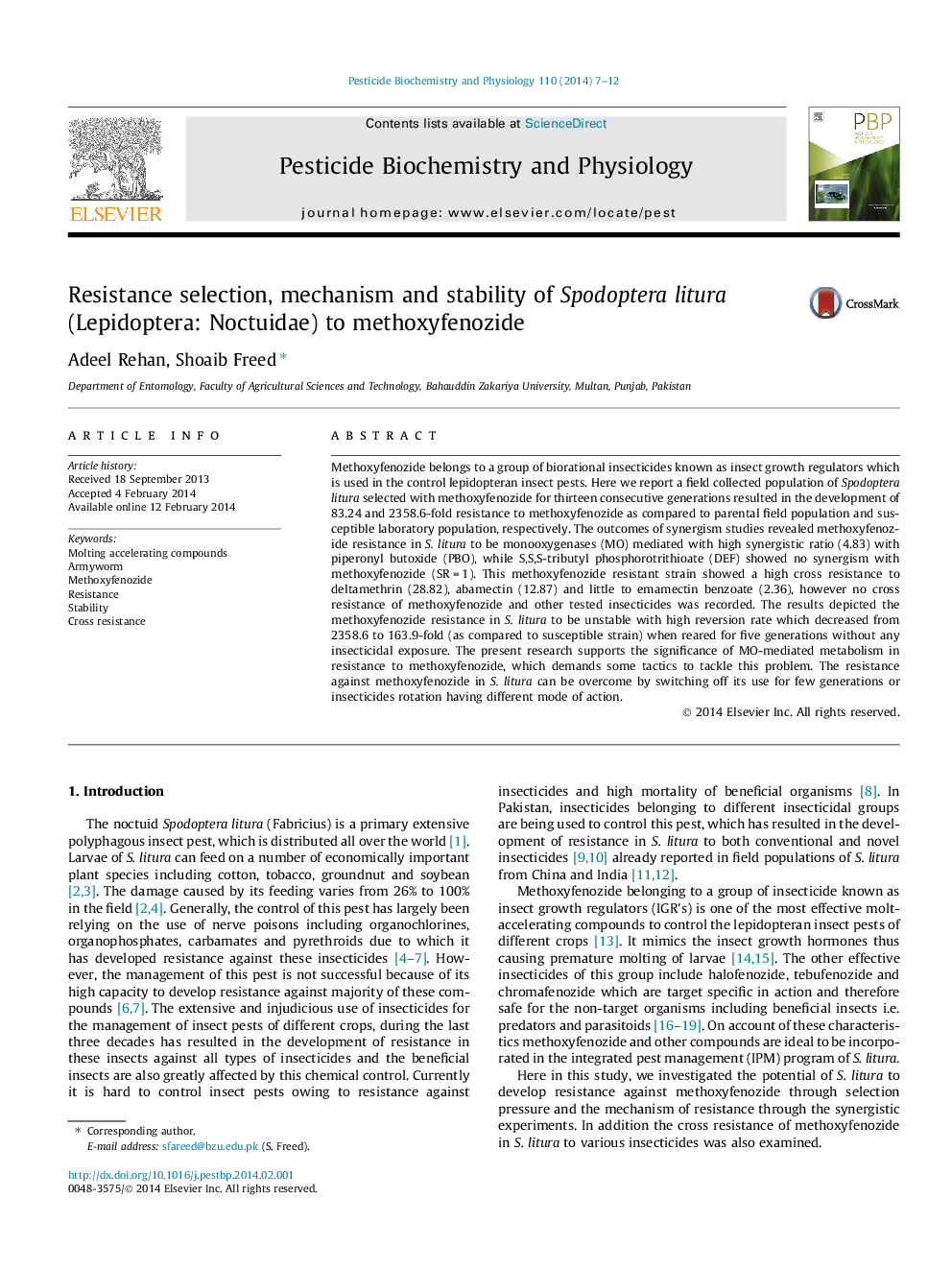| Article ID | Journal | Published Year | Pages | File Type |
|---|---|---|---|---|
| 2009254 | Pesticide Biochemistry and Physiology | 2014 | 6 Pages |
•Field collected Spodoptera litura developed 2358.62-fold resistance to methoxyfenozide.•The high synergism of PBO with methoxyfenozide indicated the presence of MO-mediated type of resistance.•High cross resistance was recorded among methoxyfenozide, abamectin and deltamethrin.•The resistance of S. litura to methoxyfenozide is unstable.
Methoxyfenozide belongs to a group of biorational insecticides known as insect growth regulators which is used in the control lepidopteran insect pests. Here we report a field collected population of Spodoptera litura selected with methoxyfenozide for thirteen consecutive generations resulted in the development of 83.24 and 2358.6-fold resistance to methoxyfenozide as compared to parental field population and susceptible laboratory population, respectively. The outcomes of synergism studies revealed methoxyfenozide resistance in S. litura to be monooxygenases (MO) mediated with high synergistic ratio (4.83) with piperonyl butoxide (PBO), while S,S,S-tributyl phosphorotrithioate (DEF) showed no synergism with methoxyfenozide (SR = 1). This methoxyfenozide resistant strain showed a high cross resistance to deltamethrin (28.82), abamectin (12.87) and little to emamectin benzoate (2.36), however no cross resistance of methoxyfenozide and other tested insecticides was recorded. The results depicted the methoxyfenozide resistance in S. litura to be unstable with high reversion rate which decreased from 2358.6 to 163.9-fold (as compared to susceptible strain) when reared for five generations without any insecticidal exposure. The present research supports the significance of MO-mediated metabolism in resistance to methoxyfenozide, which demands some tactics to tackle this problem. The resistance against methoxyfenozide in S. litura can be overcome by switching off its use for few generations or insecticides rotation having different mode of action.
Graphical abstractFigure optionsDownload full-size imageDownload as PowerPoint slide
